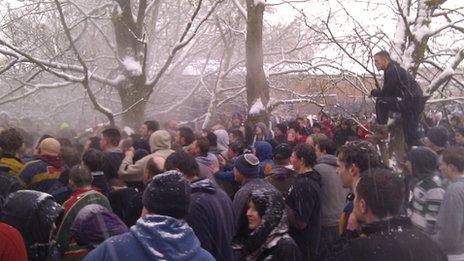Shrovetide Football in Ashbourne through the ages
- Published
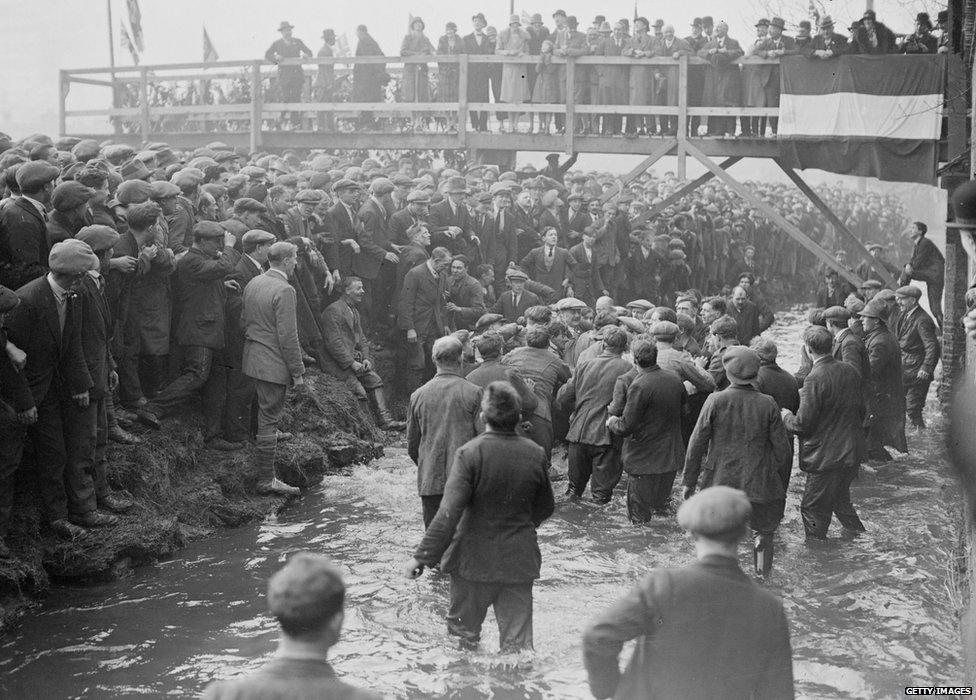
The traditional - and fairly violent - game of Royal Shrovetide Football is entering its second day in the Derbyshire town of Ashbourne. Played for centuries, its origins are now forgotten. But while the world may have changed, the game's popularity remains the same.
Each year, hundreds of participants try to "goal" by banging the cork ball against one of two stone plinths which are three miles apart. There are few rules - pushing and shoving are essential, but it is forbidden to intentionally harm other players.
In 1890, a fire destroyed much of the Derbyshire town's written records, leaving the origins of the game lost in time. But the advent of cameras allowed the spectacle to be captured on film, and photographers have been chronicling the annual scrum ever since.
As the picture above shows, players in the 1920s were not afraid to take a dip in Henmore Brook to wrestle the ball from the opposition.
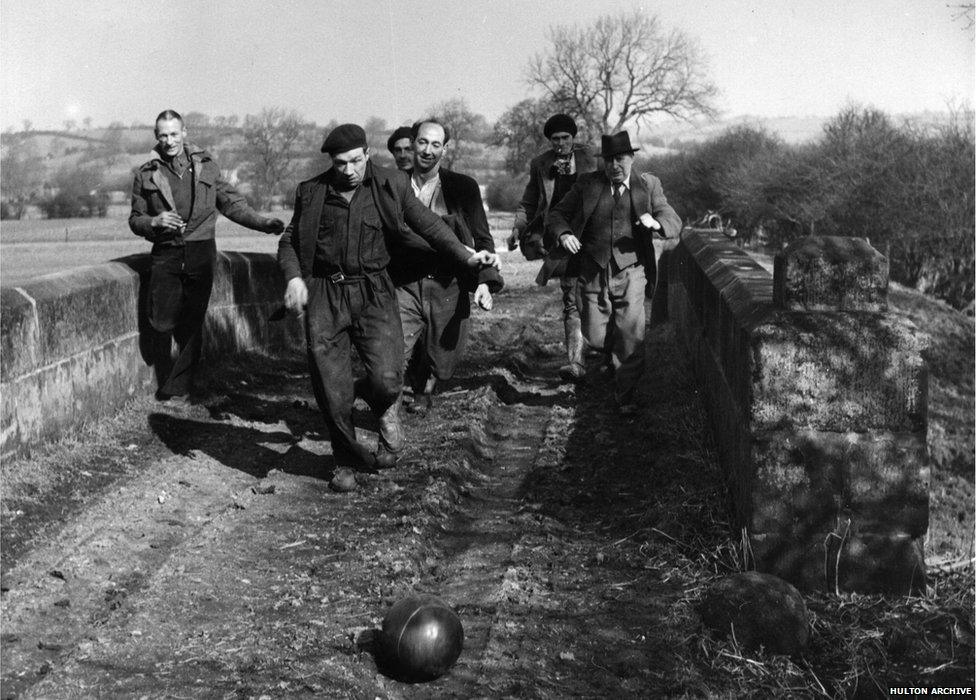
And, while the rules, external have remained mostly the same over the decades, the outfits of those taking part have not - a full suit was once not uncommon, as here in 1952.

There were huge crowds in 1966 when footballing hero Stanley Matthews "turned up the ball" (started the game) - an event recorded in the organising committee's archive.

Every year, before the game begins, local dignitaries meet for a traditional lunch. In 1969 they were serenaded with the Ashbourne Football Song, which was written in the 19th Century.
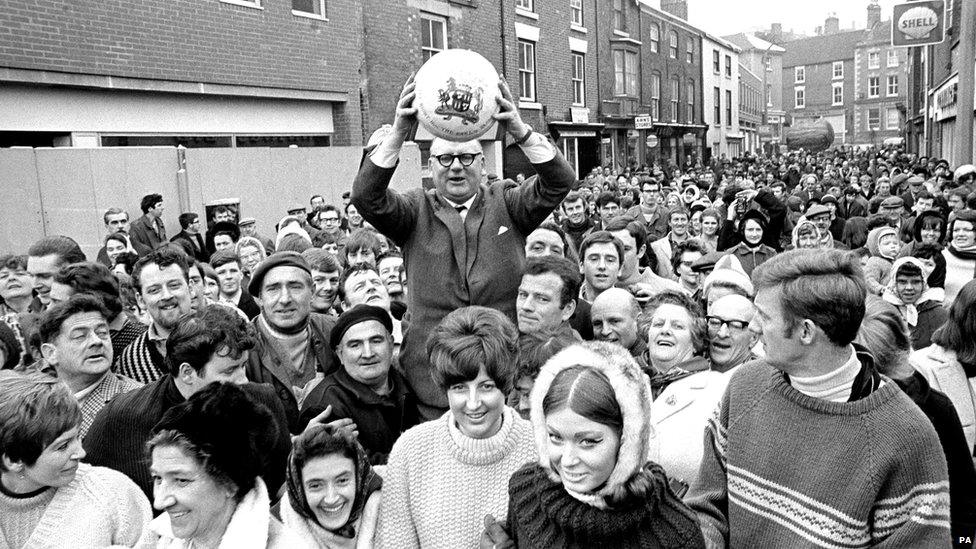
That same year - when fashion in the town was dominated by knitwear - wealthy aristocrat the Earl of Yarborough started proceedings.
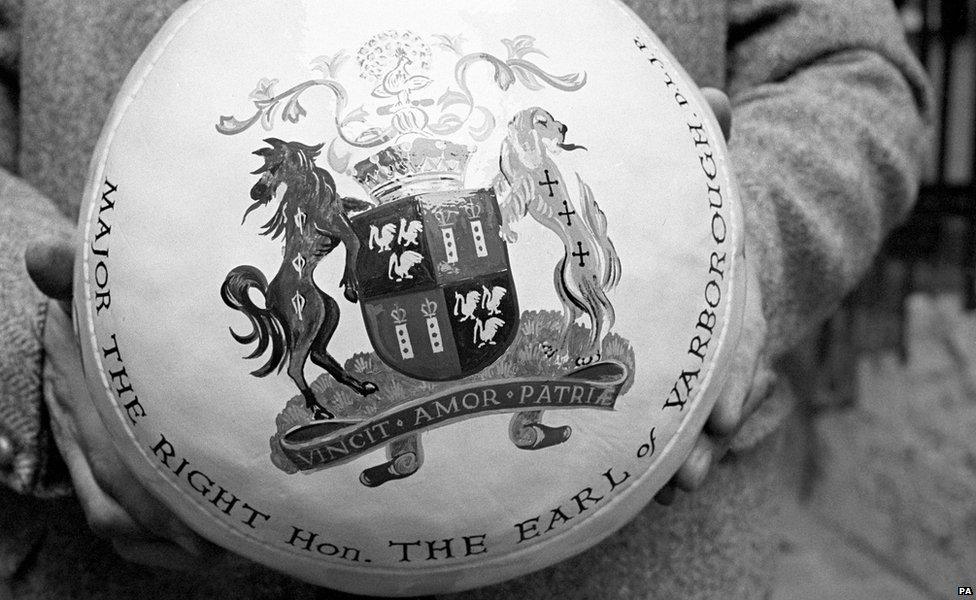
That year's ball, leather wrapped around cork, was donated by the Earl and was duly decorated with his family's coat of arms.
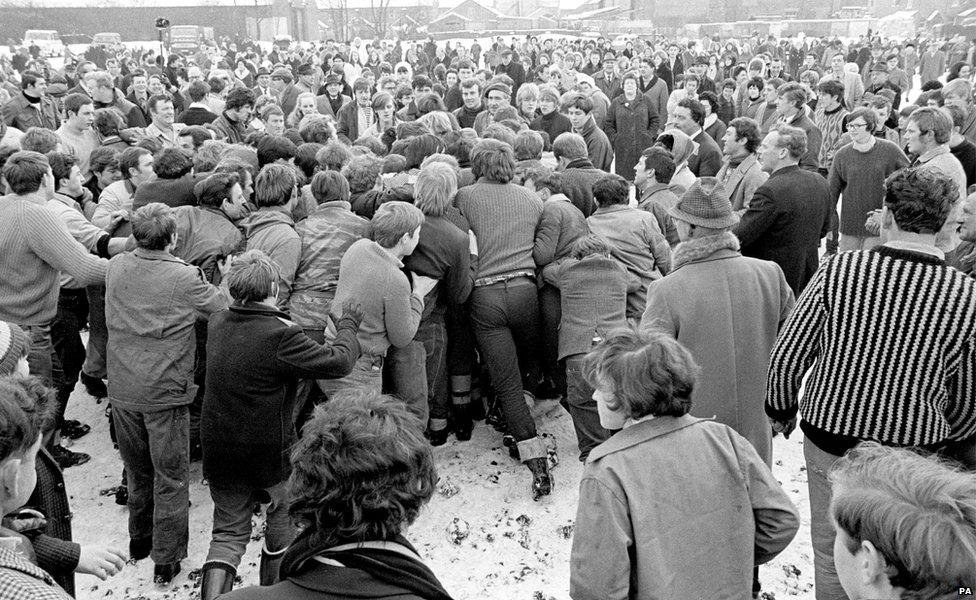
The early calm was shattered once play had started and the "hug" formed.
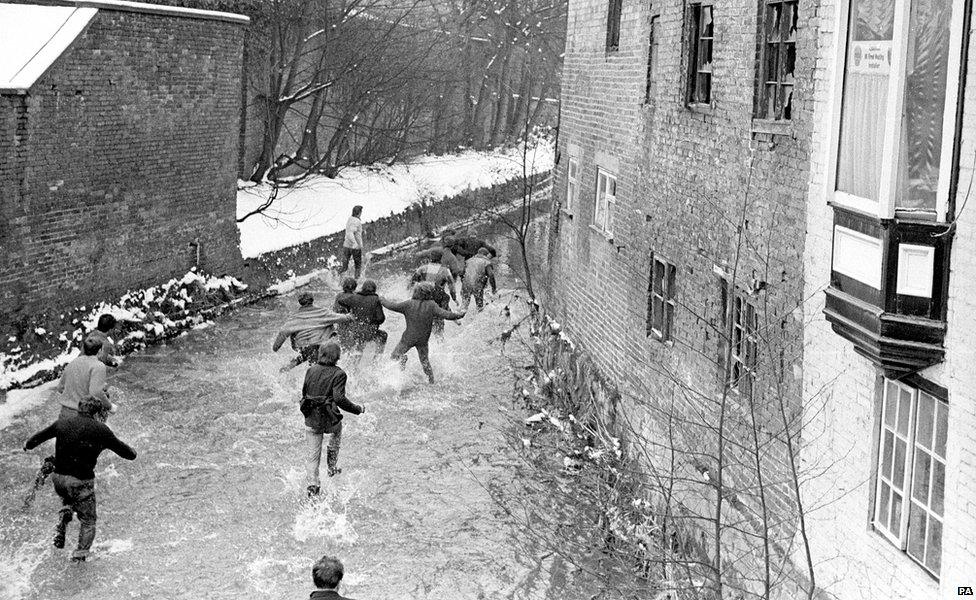
In 1969, despite the snow and chilly temperatures, competitors still took to the water to chase the ball.
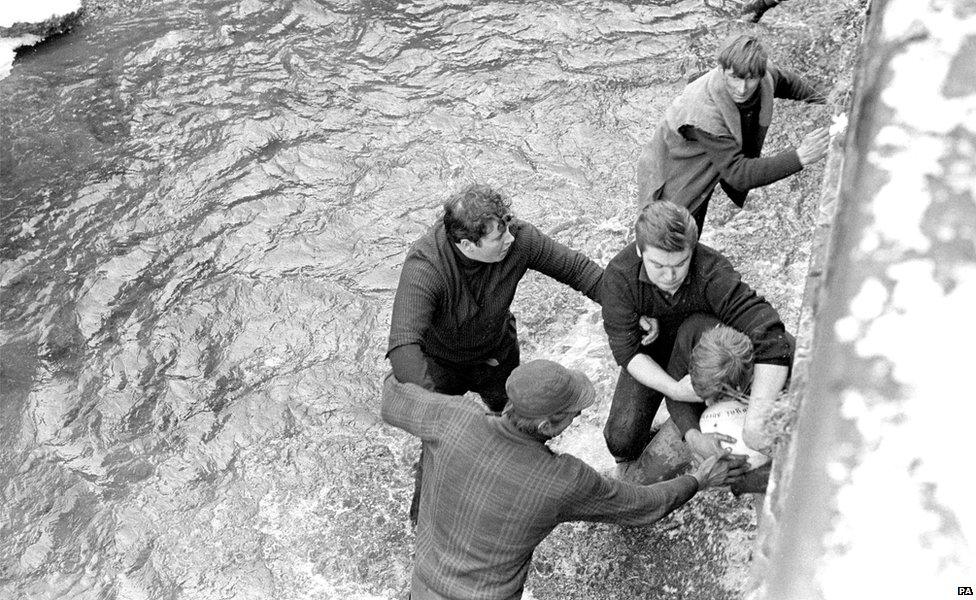
Over the centuries, many of the games have played out in the river. According to one of the few rules, those living north of the river play for the Up'ards, and those to the south, the Down'ards.
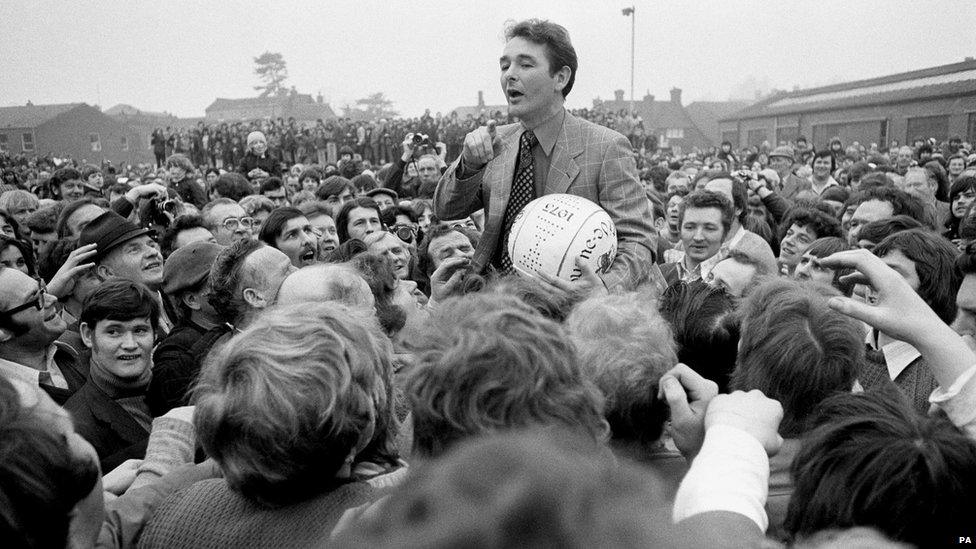
In 1975, Brian Clough, then manager of Nottingham Forest, had plenty to say to the crowd before he got the game under way. Confusingly, the ball used dates from 1973 when he was at Derby County.
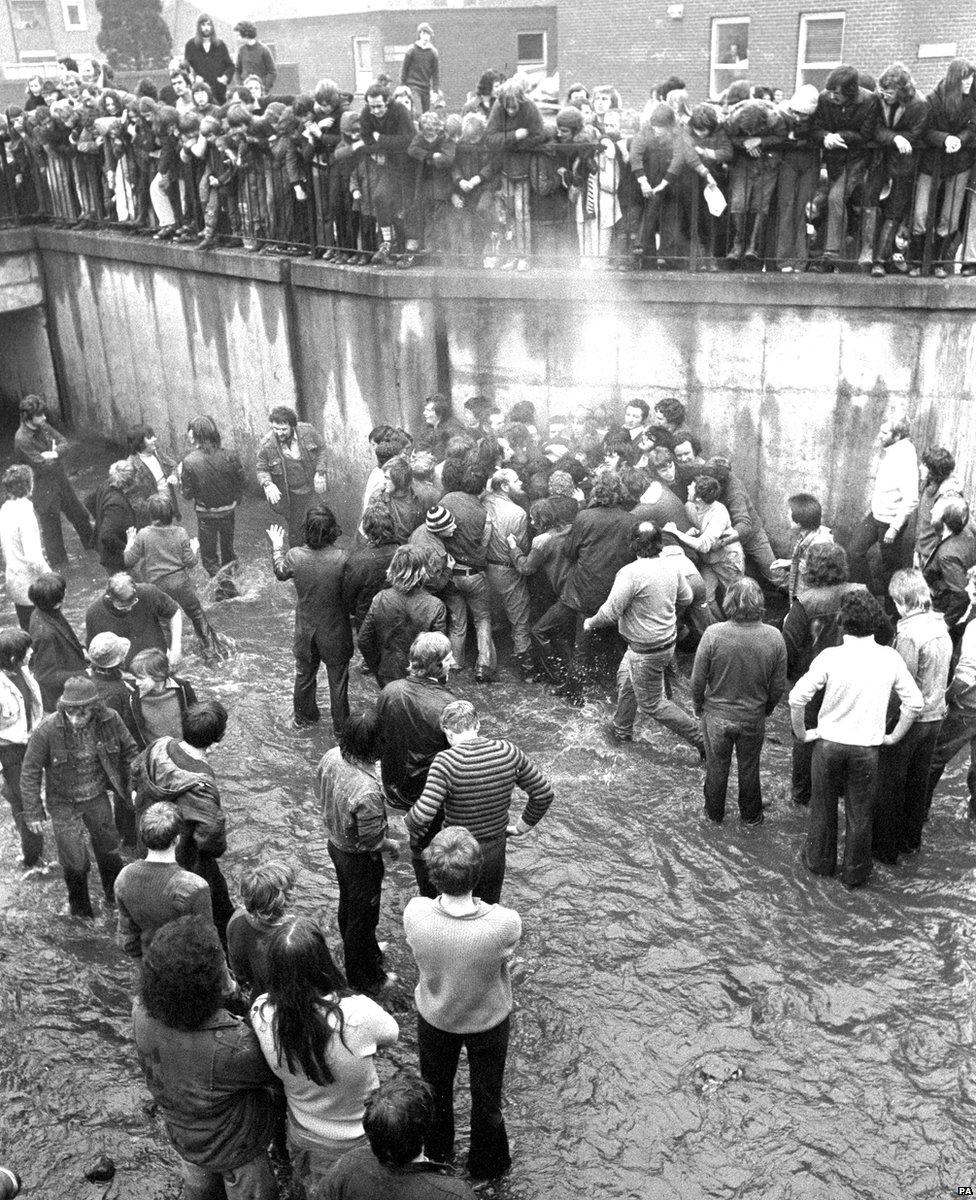
By then, fashions had changed again, with more hair and fewer hats on show. Despite the black and white photograph, it is still possible to make out steam rising from the scrum - the ball is harder to spot.
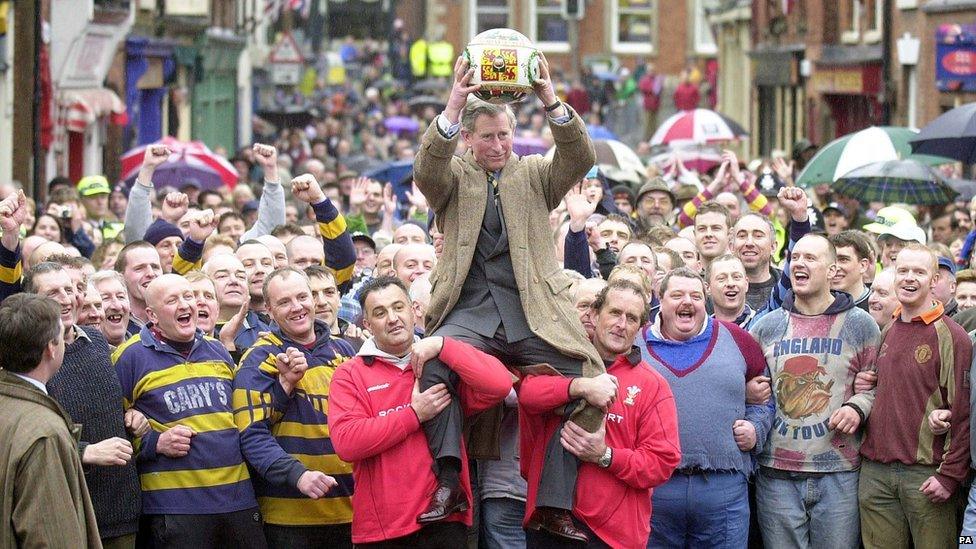
The 21st Century did not get off to a good start after an outbreak of foot and mouth disease forced the cancellation of the game in 2001, but everyone was in high spirits when Prince Charles turned up the ball in 2003.
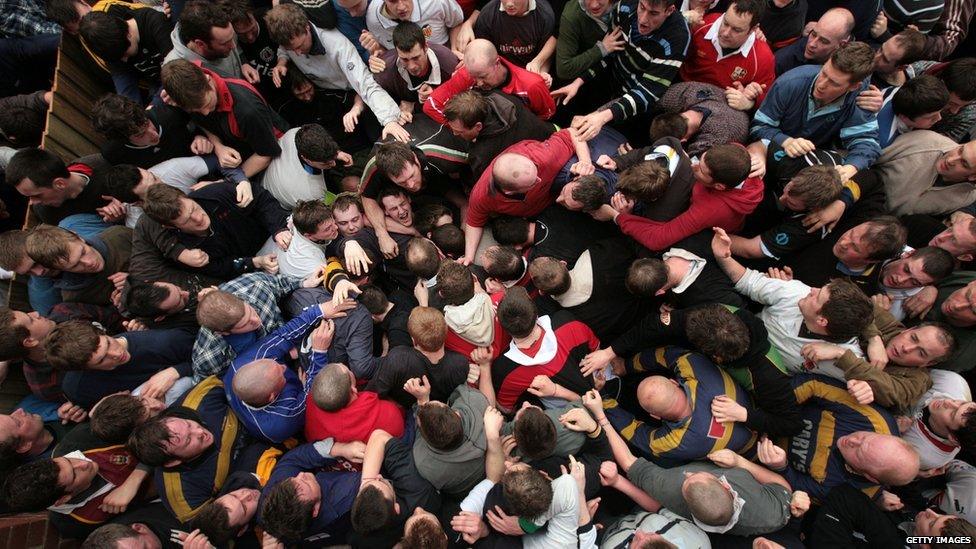
Today, the event's popularity is secure. It attracts thousands of players and spectators each year, while dozens of photographers continue to document the eccentric pastime.
- Published17 February 2015

- Published4 May 2014
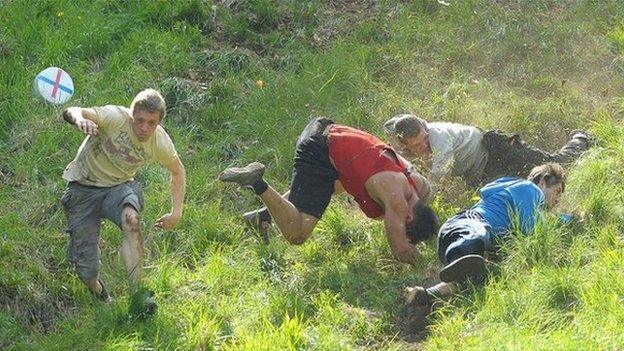
- Published4 March 2014
- Published13 February 2013
